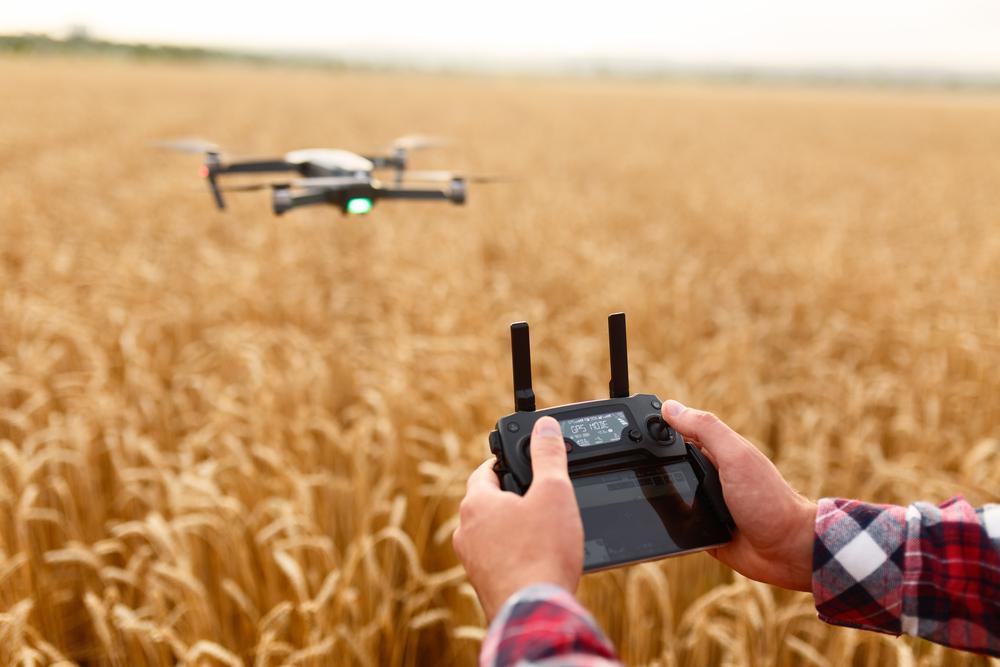5 Ways Drones are Reshaping Modern Farming

Table of Contents
For those who are not familiar with the agricultural industry, you may still be romanticizing farm culture. Imagining “Old McDonald” with a pitchfork working in the field. Of course farmers still get down in the dirt but not like Old McDonald. What you may not realize is that farming, like most things, has been drastically affected by technological progress, like robots designed specifically for farming applications. One of the current technologies that have taken off, quite literally, are farming drones.
Similar to the CB radio, unmanned aerial vehicles (UAVs) also called drones were originally created for military use, but eventually shifted to public use. Drones have opened up doors in a variety of civilian industries. Today UAVs can be found in everything from media to delivery methods to architectural planning to farming. The ability for a machine to take large stitched aerial shots is the basis of how farming drones are used. The different types of images created by farm drones allow for a better understanding of a set of crops and how they are reacting to their environment.
Farming Drones and Modern Agriculture
High-tech tools, like the best farming two way radios and farming drones, have helped farmers keep up with increasing demands. Keith Werner, a farmer and UAV pilot, said "as more technology continues to be developed and improved, I can see drones revolutionizing agriculture all throughout the growing season from pre-plant to the end of harvest."
1. Calculated Aerial Application
Crop dusting and spraying can be dangerous if not done correctly. Although certain safety measures have been taken over the years, there are still cases of pesticide drift. Drones have the capabilities to measure the topography and dimensions of a crop field then apply the same pesticides right above the crops in a much more calculated pattern.
2. Monitoring and Maintenance
Farming drones allow for full monitoring of the crops that go way above (literally) walking through your fields. UAVs allow for aerial shots that can pinpoint crop issues immediately unlike satellite photographs and other methods. Using infrared technology, some farming drones have the ability to show you a map including GPS coordinates that show exactly where there are dead and struggling plants. This is especially important in cases of crop infestations, fungus, or pests which can take out a crop population before the farmer has even recognized the issue.
3. Rethinking Irrigation
Using thermal technology, drones can pinpoint which crops need more water and how well crops are growing. This can help farmers rethink their irrigation methods. Farming with drones also allows for aerial images of the field that show the crop density of each section to see not only the temperature but how well crops are performing depending on their location.
Werner uses his drones to scout and map fields saying,"The produced maps would allow us to study orthomosaic images of the fields along with crop health maps (NDVI) so we can better diagnose issues in our fields along with our customer's fields."
4. Seeding and Fertilizing
Some farming specific drones have attachments that allow them to spread seeds and fertilizer. These are not only an exciting new way to use UAVs but are cheaper than more traditional methods of seeding.
5. Immediacy, Ease, and Price
Purchasing a farming drone is not a huge investment compared to most agricultural equipment and can usually pay off in a single season. It allows for the quickest turn around in crop spraying, crop monitoring, fertilizing and seeding and is also the cheapest method for all of the above.
No Drone Experience Necessary
With any new technology there is an upfront cost and learning curve -- it is no different with drones in agriculture. If you don't want to spend the time and money to get set up with your own drone, there are drone pilots for hire. These UAV operators, like Pilot of the Countryside, provide a variety of services including agricultural mapping and aerial filming.
The possibilities within drones are seemingly endless but of course, there are also concerns related to airspace regulation and overall well being. Before implementing a drone on your farm, make sure to do your research and make sure this is the best system for you.


